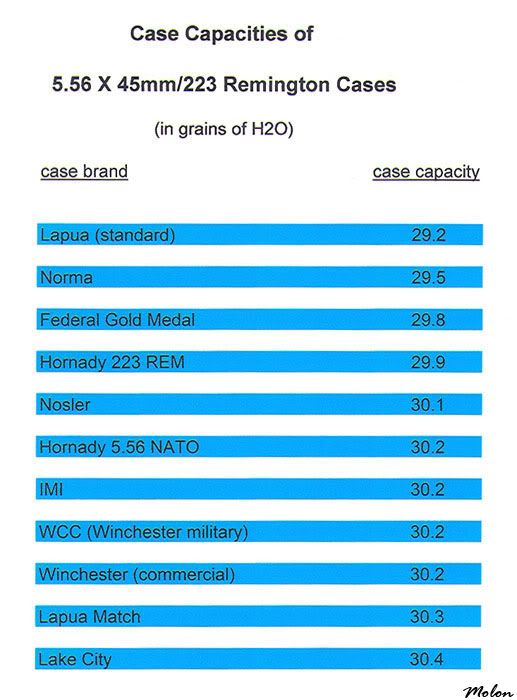Re: Lake city brass
<div class="ubbcode-block"><div class="ubbcode-header">Originally Posted By: High Binder</div><div class="ubbcode-body"><div class="ubbcode-block"><div class="ubbcode-header">Originally Posted By: BCP</div><div class="ubbcode-body">556 LC brass is actually lighter than most commercial cases. 26 varget with a 50-55 grain bullet @ 2.2" is about the max I'd do, 24-24.5 with a 75-77 @ 2.245". </div></div>
Perhaps you're thinking about the non-NATO Federal brass that's made at the same plant? All NATO brass regardless of the maker has a thicker web which means lower case capacity, i.e higher pressures. </div></div>
Not only does it have a thicker web, but the brass is thicker throughout.
To the OP ... why are you loading them so high?!? Max load is rarely the best accuracy load! If you aren't getting the groups you are looking for on published MAX .... start over! Chances are ... you missed the 'sweet spot'.
Also, not to sound too harsh, but reality is a bitch! If you don't know how to look for pressure signs ... go back and start reloading with 'Reloading 101'! Ninety-nine percent of the time a compressed load will result in high pressure signs. I've seen compressed loads using 5.56 brass blow the primer out of the pocket, and blow the pocket out of spec by .200"! Just because it's stronger brass doesn't make it 'abuse proof'. If anything ... it will be less likely to give when put under extreme stress. Why do you think you see so many 'once fired' 5.56 brass with the sides and necks split?
Don't get me wrong ... it's excellent brass and can be reloaded 5x over standard commercial brass. However, if you are constantly stressing it with extreme loadings you won't be left with anything other than 'scrap brass' after the first firing.


